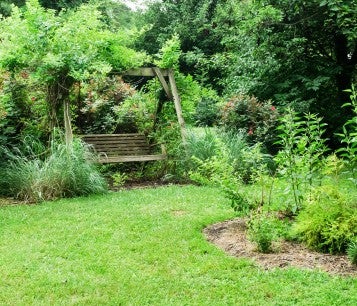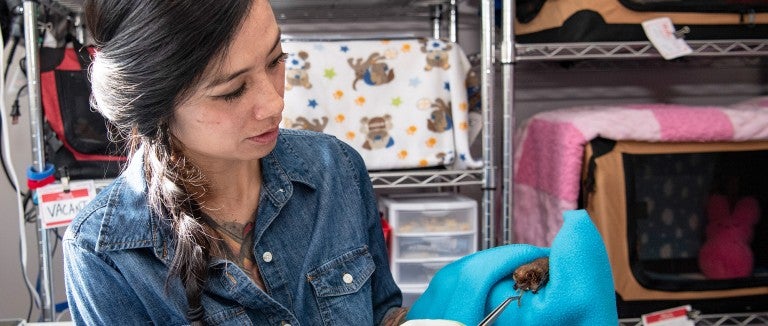The jogger crossed Francis Scott Key Bridge every day—and every day, she saw the goose underneath it. Worried the bird was stuck, she called the Humane Rescue Alliance in Washington, D.C. The lower bridge was only accessible by boat, but thanks to HRA’s relationship with a local fire department, staffers and firefighters set out on the Potomac River together.
A humane backyard is a natural habitat offering wildlife plenty of food, water and cover, plus a safe place to live free from pesticides, chemicals, free-roaming pets, inhumane practices and other threats. And it's so easy to build!

Do your research
Riley suggests calling your nearest wildlife center and asking about training, regulations and more; most will be happy to help budding rehabilitators. Your state wildlife department is also a resource, notes Pauli, and organizations like the International Wildlife Rehabilitation Council offer in-person and online rehabilitation courses.
Many centers offer volunteer opportunities that don’t require a license. City Wildlife’s Lights Out D.C. program trains volunteers to collect birds who have collided with windows; its Duck Watch program trains volunteers to monitor mallard nesting sites in high-traffic locations. When nestlings hatch, volunteers help Mom safely guide her ducklings to water.

Be prepared to teach
Most animals brought to wildlife centers are infants, but many don’t belong there. That’s because the well-meaning public often kidnaps youngsters due to misconceptions about wild animals. (For example, rabbits, deer and foxes often leave babies unsupervised for several hours.) Riley says 90% of calls involve instructing people to leave babies where they are.
Crossed adds that many calls HRA receives are from people uncomfortable with normal behaviors, like groundhogs making holes or raccoons eating trash. She offers simple solutions to prevent callers from resorting to inhumane measures.
“The reality is we deal a lot more with people than we do with animals, and you do a big disservice to the animals if you’re not able to interact with people and explain things and advocate for the animals.”
Keep wild animals wild
Unlike companion animal care, “rehab’s goal is to get the wild animal back out there, not to simply save every animal,” explains Pauli. That means limiting the animal’s time in captivity and resisting the temptation to pet them. Sadly, it also means recognizing that humane euthanasia might be the kindest option, says Riley.
But you don’t have to cuddle up to an animal for them to capture your heart: Riley says vultures are her favorite.
“They have great personalities, and they’re so important ecologically.”
Want more content like this?
This was written and produced by the team behind All Animals, our award-winning magazine. Each issue is packed with inspiring stories about how we are changing the world for animals together.
Learn MoreSubscribe


